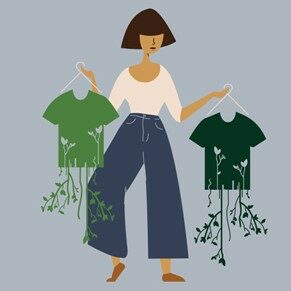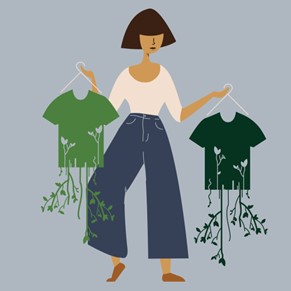

The Transition to Sustainable Options in the European Fashion Industry
The fashion industry, known for its dynamism and creativity, is at a crucial turning point. As awareness about the environmental impact of textile production grows, the transition to sustainable options becomes an imperative necessity. In Europe, where fashion is not only a reflection of style, but also of culture and identity, the search for a balance between aesthetics and sustainability has become more relevant than ever.
One of the most promising strategies in this transition is innovation in materials. Brands are exploring the use of recycled fabrics, which not only reduce the need for virgin resources, but also minimize waste. For example, some fashion houses are using recycled polyester, obtained from plastic bottles, to create garments that are both stylish and responsible. This approach not only helps reduce the carbon footprint, but also offers designers a palette of materials that can be as versatile and attractive as conventional ones.
In addition, biodegradable fabrics are gaining ground. Materials such as Tencel, made from wood pulp, and organic cotton, which decompose naturally, are being adopted by brands looking to offer alternatives that are not only aesthetically pleasing, but also respect the life cycle of the planet. This innovation not only responds to consumer demand for more sustainable products, but also opens up new creative possibilities for designers.
The key to a successful transition towards sustainability in fashion lies in finding a balance between aesthetics and environmental responsibility. Some strategies that are being implemented by European brands are:
- Circular Design: Adopting a circular design approach involves creating garments that can be easily recycled or reused at the end of their lifespan. This not only reduces waste, but also allows designers to play with the idea of transformation, creating pieces that can be modified or adapted over time.
- Local Production: By opting for local production, brands can reduce their carbon footprint associated with transportation while also supporting local economies. This approach also allows for greater transparency in the supply chain, which is increasingly valued by consumers. Small-batch production also encourages exclusivity and quality, rather than quantity, which aligns with current conscious consumption trends.
- Creative Collaborations: Brands are beginning to collaborate with emerging artists and designers who share a sustainable vision. These collaborations not only bring freshness and originality to collections, but also allow for experimentation with new materials and production techniques. By joining forces, brands can create unique pieces that tell a story, highlighting the value of sustainability in the process.
- Education and Awareness: Consumer education is critical in this transition. Brands are investing in campaigns that inform consumers about the importance of choosing sustainable products. By providing information about the origin of materials, production practices, and environmental impact, brands can empower consumers to make more informed and responsible decisions.

Picture source: https://www.quora.com/Will-sustainable-fashion-brands-do-better-after-Covid-19
- Timeless Style: Instead of following ephemeral trends, many brands are opting for a timeless design approach. Creating pieces that transcend fads not only promotes more conscious consumption, but also encourages durability. By investing in garments that can be worn for years, consumers are contributing to the reduction of textile waste.
The transition towards sustainable options in the European fashion industry is a journey that is in full development. As more brands adopt responsible practices and consumers become more conscious of their choices, the fashion landscape is changing. Material innovation, circular design, and local production are just some of the strategies that are helping to balance aesthetics with sustainability.
The future of fashion is not just about creating beautiful clothes, but doing so in a way that respects our planet. With every step towards sustainability, the European fashion industry is proving that it is possible.

Az Európai Unió finanszírozásával. Az itt szereplő vélemények és állítások a szerző(k) álláspontját tükrözik, és nem feltétlenül egyeznek meg az Európai Unió vagy az Európai Oktatási és Kulturális Végrehajtó Ügynökség (EACEA) hivatalos álláspontjával. Sem az Európai Unió, sem az EACEA nem vonható felelősségre miattuk.
